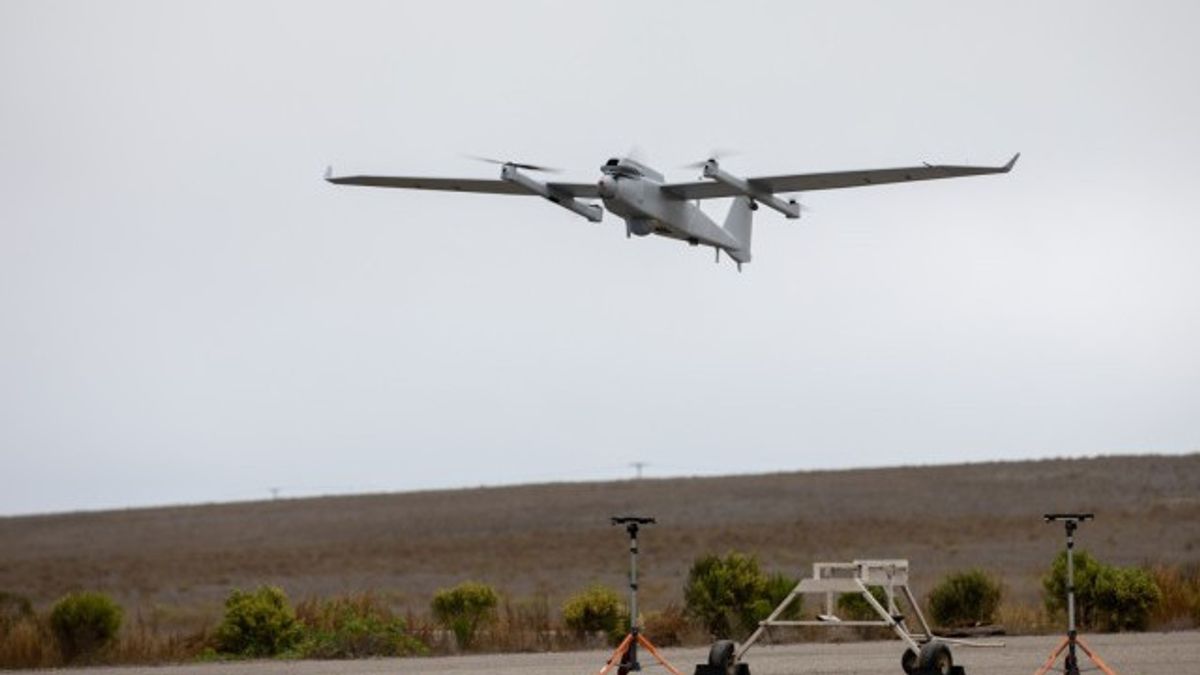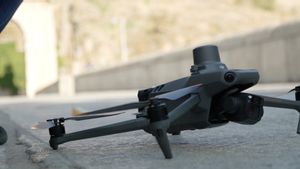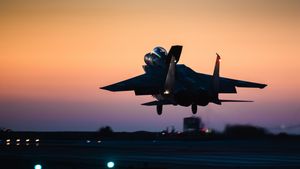JAKARTA - The US Army has successfully tested drones to deliver medical supplies in a dangerous battlefield scenario for injured soldiers.
During a recent exercise in California led by the US and military other countries, the drone in the simulation dropped blood supply and other critical medical equipment to soldiers as part of the Crimeson Project. This type of technology will be used under circumstances where situations and conditions are not safe to send people on foot to request or provide assistance.
This drone is a plane with vertical landing and takeoff (VTOL), so it does not require a catapult or catapult launch to carry out this life-saving mission.
The feature allows soldiers to survive in the early stages immediately after injury and help facilitate transport to nearby US Army hospitals.
One of the sustainment capabilities being experimented with at #PC22 used a GPS to steer cargo to a waypoint after deploying a parachute. The system allows commanders to have another sustainment alternative in remote areas. Check out this experiment here: https://t.co/Mt6YuBF5st pic.twitter.com/FK5x8H2a8R
— Army Futures Command (@armyfutures) October 22, 2022
The Cempton project is a project to leverage a common unmanned aerial vehicle system and adapt it to support medical missions, said Nathan Fisher, Head of the Autonomous Robotics and Robotics Division at the US Army's Center for Telemedical & Sophisticated Technology Research, in a statement.
This drone supports medical field care when evacuating victims is not an option. It can store all the blood and other important items cooled in the autonomous portable cooling unit and take them to field medics for injured soldiers," he added.
The Army used the FVR-90 drone from L3Harris Technologies for the Project Crimes.
In flight, airplanes such as fixed wing aircraft for 12 to 18 hours, can operate from land and sea, and have a charge capacity of up to 22 pounds (9.9 kg).
University of Johns Hopkins researchers first pointed out that blood could be delivered with drones in 2015. A study in the April 2022 edition of Lancet Global Health also showed the rapid and secure delivery of blood through drones in rural and mountainous areas of Africa.
In addition to drones, the US Army is also testing various other long-range communication and diagnostic tools for use on the battlefield.
One of these tools is called Battlefield Assisted Trauma Distributed Observation Kit (BATDOK), which is a smartphone application that can also work with sensors placed on patients to scan vital signs and other information and store them on the device.
The information will then be shared with other devices, via wi-fi or Bluetooth, providing medical personnel on the ground with a simple way to transfer patient health information to a transfer point.
This facility can view patient status in real-time using BATDOK, while medical personnel in the field can update treatment and medicines for patients as well, said Michael Sedillo, director of the cockpit sensing program pilot system integrated with Air Force Research. The lab, in a statement.
"This allows facilities to be alerted, collected, and prepare to treat patients once they are transferred," he added.
"The ability to have this technology has greatly improved medical field maintenance," said Captain Morgan Plowman, a nurse from the 15th Brigade Supporting Battalion, 1st situation Division.
"Taking tablets or cellphones to enter personnel data has improved field maintenance communication and accuracy. In such a way that the level of patient care has increased to the point where treating victims from start to finish has increased drastically," he said.
The English, Chinese, Japanese, Arabic, and French versions are automatically generated by the AI. So there may still be inaccuracies in translating, please always see Indonesian as our main language. (system supported by DigitalSiber.id)













